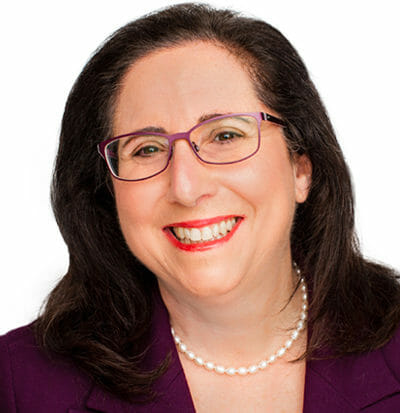The Trademark Manual of Examining Procedure (“TMEP”) is the official manual of the United States Patent and Trademark Office governing how the Office handles trademark applications and registrations. Some of its provisions are frustratingly restrictive for trademark owners, such as prohibitions against accepting advertising materials as specimens of use for marks for goods. However, the TMEP also contains some quite liberal provisions, helpful to trademark owners, that are little known.
Amending an Application for Goods to Add Additional Media of Delivery of the Goods (TMEP §1402.07(c))
This section states “that if the goods are of a type that are available in more than one medium, and the applicant does not specify the medium in the identification of goods, the applicant will be allowed to amend to add any medium, even if one of the mediums is classified as a service.” An example in that section is that “computer anti-virus software” in Class 9 can be amended to add “providing temporary use of non-downloadable computer anti-virus software,” which is a service in Class 42. Similarly, an applicant might file an application for a mark for the name of a computer game. The original application might cover “computer game software” in Class 9 if the applicant thought that the software would be delivered only in disc or downloadable form. The applicant might later decide that it will also render the service of making non-downloadable game software available online, a service in Class 41. The Class 9 application could be amended to add the Class 41 service. Such amendments would require payment of an additional class fee and, if the application is based on use, new use dates and a new specimen for the added class would be necessary.
Amending a Mark in a Pending Application to Add an Already-Registered Mark (TMEP § 807.14(b))
The usual rule is that the mark in an application can be amended only if the amended mark is not a “material alteration” of the initial mark. Such amendments include deleting minor, non-distinctive matter in a word mark (such as the word “the” or punctuation), or making minor design changes in a logo. An interesting exception to this rule is stated in TMEP § 807.14(b). That provision allows the mark in a pending application to be amended by adding a mark already registered for the same goods or services by the same applicant. Such an addition is deemed not a material alteration.
In a case cited with approval in that section, an application for the mark ELAN was amended to add the previously-registered mark 4711. This kind of amendment may allow an applicant to overcome objections that otherwise could cause an application to become abandoned. If the mark of the application is a descriptive term, amending to add a previously-registered mark could make the whole mark inherently registrable, with the descriptive term disclaimed. For a surname mark in an application, adding the previously registered non-surname mark could make the whole mark not “primarily merely a surname” and, therefore, inherently registrable. If the application is blocked by a prior mark, the cells“
amended mark might be different enough to remove the blocking citation.
Unacceptable Specimens Made Acceptable (TMEP § 904.03(k) & TMEP 904.03(i))
In applications for marks for goods, only a narrow range of specimens is usually acceptable, such as labels, packaging, and point-of-sale displays. The TMEP states two very useful exceptions to that rule, however.
For products sold only in bulk, such as liquid chemicals sold in tanker trucks, TMEP § 904.03(k) says that an invoice, bill of lading, or shipping document showing the mark is an acceptable specimen. Also, for products sold online, TMEP § 904.03(i) states that an online retail store webpage that displays the product can be an acceptable specimen as a point-of-sale display, under certain limited circumstances, including that the webpage display a means for ordering the goods. Subsections of that section contain many examples, including online retail store webpages that have been held acceptable or unacceptable as specimens. This section is especially useful to allow registration for slogans or taglines that are typically not added to labels or packaging, but that do appear in online retail store pages.
Extending an International Registration to the U.S. for Specific, but Misclassified, Goods or Services (TMEP § 1402.01(c))
USPTO examiners usually carefully examine lists of goods and services in applications (including U.S. extensions of international registrations) to make sure that the goods and services are both sufficiently specific under USPTO guidelines, and classified in the correct international class under the international classification system. The USPTO sometimes requires more specificity in the identification of goods and services than those in the WIPO official identifications manual for the international classification system. As a result, when the USPTO examines an international registration extension to the U.S., the Examiner will sometimes object that the goods or services in the international registration are too vague and/or in the wrong class.
Under the above TMEP section, there are two different rules for handling the situation. One is extremely strict and the other is quite liberal. The extremely strict rule is that a vague identification of goods or services, which is also classified in the wrong class in the International Registration and, therefore, in the U.S. extension, cannot be clarified and must be deleted. However, the liberal rule is that sufficiently specific goods can remain in the U.S. extension without amendment of the class, even if they are misclassified. There are sometimes classification ambiguities or examination errors that result in an international registration covering specific goods or services that fall in what the USPTO considers the wrong class. For example, the terms “solar cells,” “photovoltaic cells” and “solar panels for production of electricity” are approved terms in Class 9 in the USPTO online ID manual. The term “solar collectors,” however, is classified in Class 11 in the USPTO. If, by error, the international registration covered “solar cells” in Class 11, then the U.S. examiner would be obligated to accept those goods in Class 11 in the U.S. extension because “solar cells” is a specific approved term in the USPTO ID manual, albeit in Class 9. On the other hand, if the international registration covered the vague term “solar panels” in Class 11, and the applicant really meant to cover “solar panels for production of electricity” in Class 9, then the U.S. examiner would require the goods to be deleted. They could not be amended to “solar cells” in Class 9 or to a more specific Class 9 term that includes the phrase “solar panels,” that is, “solar panels for production of electricity.”
The takeaway from this rule is that applicants who want to extend an international registration to the U.S., and to be sure that it will protect particular goods or services of interest, must make sure that those goods and services of interest are either covered in the correct class (by USPTO standards) in the home application or registration that forms the basis for the international registration, or are covered in the wrong class, but are specific enough by USPTO standards.
Assigning a Part of an Application or a Registration (TMEP § 501.06 & TMEP § 1615)
In sales of businesses, the business owner may retain part of the business and sell part of the business. Existing trademark applications or registrations, especially for the house mark of the business, may include all the goods or services of the business. In that situation, TMEP § 501.06 allows the applicant to divide the application into two applications, each covering different goods or services, and to assign the child application to the buyer. Similarly, TMEP § 1615 allows a registration to be divided and the child registration to be assigned to the buyer. Also, a new registration certificate for the child registration can be issued to the new owner. Keep in mind that the whole or partial assignment of an intent-to-use application presents some special issues beyond the scope of this short discussion. Also, divided ownership of a mark presents some business and legal issues that are also beyond the scope of this short discussion.
–DWE


















































